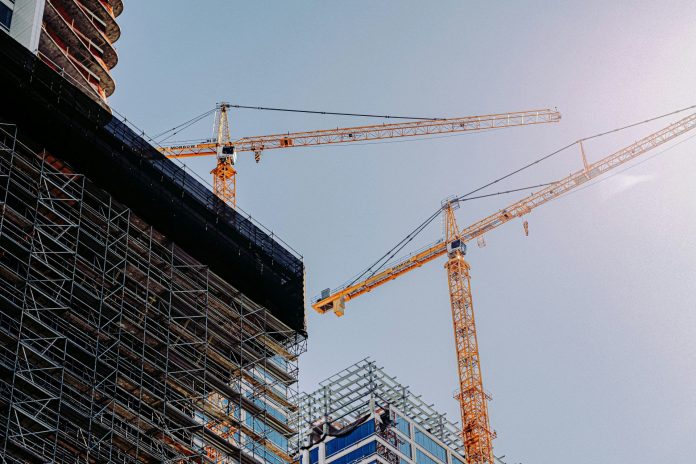When most people imagine reinforced concrete, they picture traditional steel bars hidden beneath the surface. But new advances are quickly changing the game. Durabar fibreglass-reinforced polymer bars are emerging as a smart, modern alternative that’s setting new standards for strength, durability, and design flexibility in construction. As demand for longer-lasting and more sustainable infrastructure rises, these advanced composite bars are stepping into the spotlight.
What Makes GFRP Bars Different?
Fibreglass reinforced polymer bars (GFRP) combine strong glass fibres with a durable resin, making them both tough and lightweight. Unlike steel, GFRP bars never rust, making them ideal for areas where moisture or salt are constant threats.
GFRP also offers electrical insulation, which makes it safer for infrastructure like tunnels or bridges. Its non-magnetic properties mean it won’t interfere with sensitive electronics, opening doors for new applications in hospitals, labs, and transport projects.
The Problem with Steel Rebar
Steel rebar has served us well for decades, but it comes with real limitations. In wet, coastal, or chemical-exposed environments, steel is prone to rust. When corrosion sets in, the expanding steel can crack concrete, compromising both safety and longevity.
Even routine repairs to corroded steel are costly and disruptive, often requiring demolition and waste. For governments and developers, maintenance costs can quickly eat into budgets and delay operations.
Where Durabar Excels
Durabar’s composite GFRP bars solve these challenges. Since they’re immune to corrosion, they perform reliably in tough conditions for years, making them a top pick for bridges, coastal structures, or anywhere harsh weather is a factor.
Lighter than steel, Durabar bars are easier to transport and install, cutting down on shipping costs and making jobsites safer for workers. Contractors often report time savings and less physical strain during installation.
Sustainability and Eco-Friendly Construction
Builders today are under pressure to meet higher sustainability standards. Dextra, the brand behind Durabar, engineered these bars with a greener future in mind. GFRP’s resistance to corrosion means fewer repairs and less waste over time, helping structures last longer.
Durabar also has a lower carbon footprint compared to steel, supporting eco-friendly construction. Using GFRP can help developers earn green building certifications and meet demanding environmental targets. This is an increasingly important factor for public projects and corporate investors.
Safety and Strength That Go Beyond Marketing Hype
It’s natural to wonder if a non-metal bar can really compete with steel. The answer is yes. GFRP delivers impressive tensile strength and won’t deform over time. Dextra puts each Durabar product through strict quality tests, ensuring they meet global safety standards.
Beyond resisting corrosion, GFRP is also chemically resistant, which makes it a smart pick for wastewater plants and chemical facilities. Structural engineers appreciate the predictability and proven reliability of Dextra’s solutions.
Design Freedom for Engineers and Architects
Since GFRP doesn’t rust, Durabar lets designers push boundaries. Thinner slabs, daring cantilevers, and creative shapes are possible without sacrificing durability or safety.
Architects can pursue innovative, visually striking designs such as dramatic curves, sleek bridge decks, and intricate forms, knowing that Durabar’s performance will last. This new freedom is changing how infrastructure and public spaces look and feel.
Global Success Stories
Around the world, Dextra’s GFRP bars are already reinforcing next-generation structures. Bridges exposed to salt spray, water treatment plants, and new buildings in busy cities all benefit from the durability and reliability of GFRP.
Project after project reports fewer repairs, longer lifespans, and lower costs over time. As adoption grows, Dextra’s role as a trusted partner is helping to set higher standards for modern construction.
Why the Future Is Fibreglass
As urban areas expand and demands for longer-lasting structures grow, the construction industry needs new materials that go beyond what steel can offer. Durabar and Dextra are helping lead this change by providing solutions that are smart, sustainable, and strong. It’s clear that the future of concrete construction is brighter and much more resilient thanks to innovative options like GFRP bars.



 Bitcoin
Bitcoin  Ethereum
Ethereum  Tether
Tether  XRP
XRP  USDC
USDC  Wrapped SOL
Wrapped SOL  Lido Staked Ether
Lido Staked Ether  TRON
TRON  Cardano
Cardano  Avalanche
Avalanche  Toncoin
Toncoin